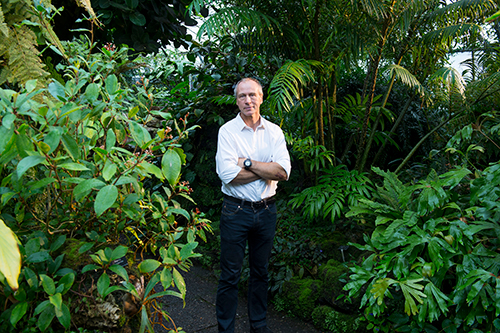A paper led by ENU's Professor Mark Huxham calls on local voices to be heard amid the climate crisis
A new paper led by Edinburgh Napier University's Professor Mark Huxham has sought to understand how ‘Nature-based Solutions’ (NbS) to the climate crisis can lead to just outcomes for local communities involved.
The article ‘Rawls in the mangrove: Perceptions of justice in nature-based solutions projects’, published this week in People and Nature, asks how should we think about and conceptualise justice in the pursuit of NbS.
The authors explored this question by comparing and contrasting how local participants and beneficiaries, international stakeholders and governing documents frame and conceptualise justice in the context in the context of the first mangrove-based ‘blue carbon’ project, Mikoko Pamoja, and its sister project Vanga Blue Forest, both located in coastal Kenya and involving substantial input from community members.
No universal understanding of justice
The research revealed that community participants take pride in these two projects, but that ‘justice’ is far from being a universal set of ideas and there is often a mismatch between different parties involved – the scientists, the financial backers, the practitioners and the local residents – about what justice is. As the authors point out, this is due to ideas of justice being shaped by different experiences, history and culture, as well as the positionality and social status of different groups involved in keeping the projects going.
The article’s findings make clear that NbS project success depends on the consent and active participation of people who live in project areas. This requires a genuine commitment to the hard work of understanding and respecting norms and expectations for fairness in decision-making and sharing of project benefits, and crucially, and understanding of different views and experiences of justice.
It is important for practitioners and researchers who are designing and studying NbS interventions to understand that if they begin work with an ‘outside’ notion of justice that does not match the reality with the situation on the ground, this mismatch can result in negative outcomes for the project in a variety of ways. For example, applying a ‘one size fits all’ notion of justice can create blind spots to vulnerabilities experienced by different groups of people within a community such as women, elderly people or people who may be sacrificing income for the sake of a project. Well-meaning projects can impose governance structures that may seem to outsiders to be democratic and highly equitable, but which might also lack legitimacy and support locally.
Professor Mark Huxham from Edinburgh Napier University’s School of Applied Sciences and lead author of the article, said:
“It is important to make sure that communities behind these crucial conservation projects are empowered and supported.
“Local stakeholders we spoke to for this research were proud of their work and keen to expand on it. Our findings support the idea that nature-based solutions to the climate emergency are best underpinned by ethical justice.
“This relies on the hard work of understanding local perspectives – as well as a market that allows for higher carbon prices and avoids economic efficiencies on the ground.
“Listening to local people and learning from their perspectives will always be an essential part of this.”
Dr Amber Huff, Research Fellow at the Institute of Development Studies and co-author of the article, said:
“The fact is that justice means different things to different people, with different priorities, social positions and different levels of social power in conservation settings.
"For example, a buyer on the voluntary carbon market, a government minister, and a small-scale farmer will have very different priorities and ideas about what is just or equitable when it comes to resource access and distribution of benefits associated with a conservation project.
“As a result, issues around questions of how to achieve justice in conservation settings are hotly debated. What is important is that conservation projects pay as much or even more attention to understanding perceptions of justice as much as other aspects of conservation such as scientific precision.”
Considering the history of conversation
The understanding of justice in projects such as the blue carbon projects in Kenya is even more important in the context of the history of conservation, which includes interventions that have displaced, misrecognised, denied agency and voice, and otherwise harmed indigenous and rural communities and landscapes in the global South more broadly. The authors of the article make clear that despite the rise of the community-based management (CBM) and attempts to bring justice more fully into conservation projects, a fierce debate persists between those who continue to emphasise protection, and who are criticised for ignoring justice, and those who think justice should be the foremost value guiding conservation interventions today.
Read the open access article here. The authors of the article are Mark Huxham, Anne Kairu, Joseph K. Lang’at, Rahma Kivugo, Mwanarusi Mwafrica, Amber Huff, Robyn Shilland.
This article was first published by the Institute of Development Studies.